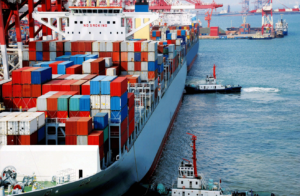
Man has always been dependent on the ocean. As we began to trade with foreign lands, the importance of ports around the world grew and today they play a critical role as a fundamental part of the world’s transport infrastructure. They provide gateways to the outside world and have enabled nations to transform into export-oriented economies and benefit from foreign trade. With enhanced globalization, the role of ports has changed but coupled with the benefits of trade are the challenges and pressures of security management.
The industry is fraught with contradictions. Whilst ports are rapidly expanding, there is no doubt that they need security management, but at the same time there is an urgent need for safe, highly-efficient and manageable services. There is also pressure on operators to ensure proper systems are in place. However, with large port supervision areas and sometimes complex situations, managing this civil defense can be difficult.
Port Security is Under Threat
Usually a port area covers several square kilometers, but some port zones can reach tens of square kilometers. So covering a large jurisdiction combined with complex transportation, then add a large number of entrances, perimeter fences, long channels, large scale storage yards, and the numbers of berths it is not surprising that security needs have led to a dramatic increase in the number of workstations across a port. If only dependent on civil defense, how can maritime security keep checking of regular operations? Now with the development of technology, illegal immigrants and organized crime have also affected safety management. But putting the human resources in place to effectively combat, this issue would be very wasteful and in most cases the role would be pretty monotonous. Therefore it makes sense to combine the protection approaches with intelligent defense.
Multiple Managements
Exchange and data-sharing is a part of informationization. Ports view each workstation as a unit in terms of achieving video monitoring data. In most cases, the utilization and management of video and business data are comparatively independent at each station.
So there is a lack of an integrated, systematic and multi-level security network system. On top of this, ports have to balance demand for the correct allocation and access control from monitoring centers to sub-centers, sub-centers to monitoring points in customs, port bureaus of public security, maritime bureaus and border defense etc.
Intellectual Reformation of Ports
With the emergence of smart ports, the need for intellectualized safety management has become very apparent, particularly for the automated identification of containers, staff and drivers who frequently entry and exit the harbor. A multimedia integrated management system is required to support the Information Management System (IMS) notification at each critical step of flow, and could be used in conjunction with a sign-in system and security system. Integrators can obtain basic data via electronic tags and cameras, to realize a whole-process and omnidirectional management control system for incoming and outgoing cargo. At the same time, the port safety can be guaranteed through facial recognition technology, tracking analysis and video motion tools in cooperation with broadcast and sound-warning devices.
Challenging Monitoring Demands
With the continual evolution of video surveillance products and technology monitoring requirements, their application in port zones needs to keep up with the times. Firstly, high definition imaging: Since ports gather large crowds of people, vehicles and boats across their extensive grounds, if you want to differentiate the details, you need to use a high resolution camera in order to support the application. In addition, poor light and remote monitoring at night are considerations. In a harbor, the majority of attacks happen on a dark night or during heavy fog, so it is important how to ensure port safety in this kind of situation. Current high demands for use in ports include remote surveillance, panoramic monitoring and products which must be explosion-proof and anti-corrosive.
So global ports are finding themselves in challenging situations. It is critical to find a way to turn this situation around.
Adapted from Git-Security Magazine



































































